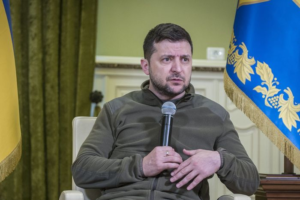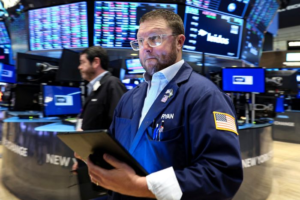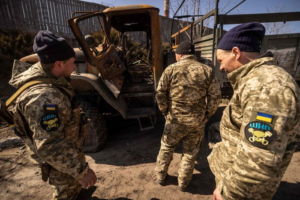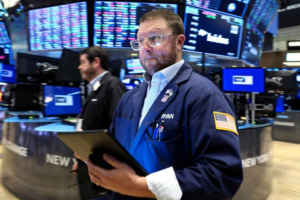
A string of mass shootings over the past three months as the U.S. re-opened from the pandemic was one of the worst on record, and law-enforcement officials are fearful of more to come.
There were five attacks in which four or more people were killed in public places from March through May, matching the highest three-month total going back to 1966, according to the Violence Project, a mass-shooting database run by two criminology professors.
For almost exactly a year, as Covid gripped the country, there were no shootings that killed four or more people in public places, according to the project. Then on March 16, a 21-year-old fatally shot eight people at spas in the Atlanta area. That attack was followed by mass shootings at a Colorado supermarket, a Southern California office building, an Indianapolis
facility, and a San Jose, Calif., railyard. A total of 39 people were killed.
With five in the U.S. since January, 2021 has had more mass shootings through the first half of the year than each year since 2010, except for 2018.
Mass shootings each year, by number of fatalities



Law-enforcement officials and threat-assessment professionals say possible factors behind the recent spate of mass shootings include the growth in public gatherings as the Covid-19 threat has eased, the stress of the pandemic on Americans’ mental health and record sales of guns last year.
“We’ve got people that have been sitting around for over a year with nothing but time to plan; all they need is that point that pushes them over toward violence,” said
Mike Sena,
director of the Northern California Regional Intelligence Center, a federal law-enforcement hub that identifies threats in the region and shares information with local law enforcement. “There’s been people that have had a lot of angst, there’s a lot of people who’ve been acquiring a lot of weapons.”
Researchers theorize that some attackers are inspired by others, which could help explain clusters like the ones seen in recent months. In 2015, data scientist
Sherry Towers
found that in the 13 days after a mass shooting there was a temporary increase in probability that another would occur. Ms. Towers argued that this contagion effect could be similar to ones that have developed around suicides.
“It’s probably because there are people who are already experiencing difficulties and tensions, and one of these things happen, they read about it, they learn about it, and they may start to identify themselves with the perpetrator,” said
Bryan Vossekuil,
a retired Secret Service agent who co-authored studies on assassinations and school shootings.
No evidence has emerged yet that the recent attacks were inspired by one another, but authorities say the 21-year-old supermarket shooter in Boulder, Colo. purchased his AR-15 pistol on March 16, the same day as the Atlanta spa shootings.
Days between mass shootings

366 days without mass shootings
Five mass shootings since mid-March 2021

366 days
without
mass
shootings
Five mass shootings since mid-March 2021

366 days
without
mass
shootings
Five mass shootings since mid-March 2021
In at least two of the attacks this year, the gunmen were at one time on law enforcement’s radar.
Samuel Cassidy,
who killed nine of his co-workers and himself at a Valley Transportation Authority facility in San Jose on May 26, was detained in 2016 by U.S. Customs officers who found “books about terrorism and fear and manifestos…as well as a black memo book filled with lots of notes about how he hates the VTA,” according to a Department of Homeland Security memo viewed by The Wall Street Journal.
Brandon Hole,
a former FedEx Corp. employee who killed eight people and himself at the company’s ground facility in Indianapolis, had been temporarily committed after his mother reported to police in March 2020 the he might try to commit “suicide by cop.” Police seized a shotgun at the time.
Authorities were able to stop one would-be mass shooter, arresting 28-year-old
Coleman Thomas Blevins
of Kerrville, Texas on May 28 after they intercepted a message that he was allegedly planning a mass shooting at a
The Kerr County Sheriff described Mr. Blevins as having extremist ideologies, and posted a photo of items seized from his home that included a copy of the Turner Diaries, an influential novel for white nationalists. White nationalists have committed mass shootings in the past, including one at an El Paso Walmart in 2019 where 22 people died. A public defender representing Mr. Blevins declined to comment.
Mass shootings are still a small fraction of the nation’s homicides, which surged last year and are rising in some cities this year too.
SHARE YOUR THOUGHTS
What can be done to stop mass shootings in the U.S.? Join the conversation below.
According to the Federal Bureau of Investigation, they have increased in frequency and deadliness since the bureau began tracking them in 2000. Last week, the FBI published a study showing that 1,062 people were killed in 333 active-shooter incidents from 2000 through 2019.
One of the difficulties in tracking these incidents is that there is no universal definition of a mass shooting. The FBI defines an “active shooter” as “one or more individuals actively engaged in killing or attempting to kill people in a populated area” without a set number of victims.
The Gun Violence Archive, a nonprofit research group that tracks mass shootings, defines a mass shooting as one in which four or more victims are wounded or killed by gunfire.
By that measure, there have been 254 this year compared with 610 for all of 2020. Those figures include gang shootouts and domestic shootings in private settings.
Write to Zusha Elinson at zusha.elinson@wsj.com and Luis Melgar at Luis.Melgar@wsj.com
Copyright ©2020 Dow Jones & Company, Inc. All Rights Reserved. 87990cbe856818d5eddac44c7b1cdeb8
















